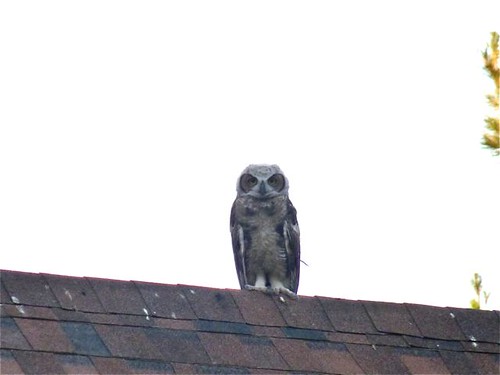Night has always been a special time for me. Mysterious, with a slight touch of danger, it can also be a really good time for reflection. Watching the bats and nightjars come out on their nightly hunts and the stars appear, along with occasional planets and/or the moon, is a worthwhile occupation that seems to bring one closer to the earth and to mitigate the troubled world of humans, at least for a time. I have experienced night in a number of places - the Camino del Diablo of southern Arizona, the Atlantic Coast of Trinidad, the subtropical forests in the Florida Keys, and the swamps of south Georgia, for example. However southern New Mexico, where I currently live, has (like everywhere) its own charm and mysteries. I invite you to join me on the exploration of this world of shadows and light in June.
Mesilla and Mesilla Park at night are a bit more lively than one would think. Walking in the night is refreshing after a hot summer day, but one does have to watch out for Striped Skunks (Mephitis mephitis) and occasionally Raccoons (Procyon lotor- we saw two during a recent mid-June walk). The occasional Gray Fox (Urocyon cinereoargenteus) is not a problem (although we have had one bark at us - a very strange sound akin to the scratching of finger nails on a black board!) The Big Brown Bats (Eptesicus fuscus) are back for the summer, as are the Lesser Nighthawks (Chordeiles acutipennis). The bats are often seen skirting the canopies of trees as they hunt night-flying insects. Occasionally we hear Great Horned Owls (Bubo virginianus) and sometimes see them. I have yet to get a good photo of an adult, but will continue to try.

A young Great-horned Owl on a rooftop near a canal in Mesilla.
In the past we have also encountered smaller bats (myotis or pipistrelles), Western Screech Owls (Megascops kennicottii - whose bouncing ball hoots are now apparently missing since the Great Horned Owls moved in), a Night Snake (Hypsiglena torquata), various toads, Black-crowned Night Herons (Nycticorax nycticorax - which were responsible for a puzzling "gronk" noise from a couple of large trees along a suburban street. These have also been driven away by the Great Horned Owls), and the usual calls of crickets, Broad-winged Katydids (Microcentrum rhombifolium - these produce a sort of ticking sound), and buzz of June Beetles.
Above us the stars of summer are usually visible, only occasionally obscured by clouds in June, but this year a few nights by smoke from the forest fires in the Gila National Forest. The easily visible stars include the Summer Triangle of Altair, Deneb and the brilliant Vega to the east, and the red giant Antares in Scorpius, to the south. The stars of Ursa Major and Ursa Minor seem balanced to the north, while Arcturus lights the way almost directly overhead. This summer we can add Saturn, near Spica in Virgo, and Mars, just south of Leo. Just ahead of Scorpius lies Lupus, Centaurus, and Corvus. A pair of binoculars reveals the huge globular cluster Omega Centauri about midway across the constellation of Centaurus and also the neat globular M 4, near Antares. The center of our galaxy rises to the SE and hidden inside it is the huge black hole around which we, our sun, and all the other stars in the system revolve. Just beyond it to the east of the top of the "teacup" of Sagittarius lies the impressive globular cluster M 22 and the open clusters M 6 and M 7 sparkle like diamond dust between the sting of Scorpius and the teapot.
Night is magical in very many ways and brings on the blooming of Sacred Datura in our backyard. Late (and early)-flying bees seem to get drunk on the nectar and are often found foundering around in the huge white blooms. The fragrance is quite remarkable, but the plant is poisonous in all its parts, being a nightshade. In addition a potted non-native Night-blooming Jasmine (Cestrum nocturnum- another nightshade - Family Solenaceae) near our front door often perfumes the air with its almost narcotic fragrance. When I was growing up in Yuma, Arizona, my mother had two species of Night-Blooming Cereus that were also quite beautiful, fragrant (but not so potent), and fascinating to watch while they were opening. Unfortunately at 4000' elevation our winters have enough nasty (but short) frost periods that these are marginal at best.

Datura bloom in morning with Halictid bee on stamens.
Night in the Mesilla area is one of my favorite times and while I have walked at night often, sometimes as late as midnight, I have not felt especially uncomfortable. The "wee beasties" (skunks and raccoons) are the biggest problem and occasional stray dogs have caused a bit of difficulty, but otherwise the night seems fairly trouble free. I am grateful for this, as it is not shared by an unfortunate number of communities on the planet, especially those only 40 miles or so to the south.


